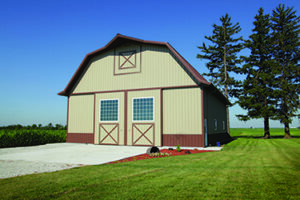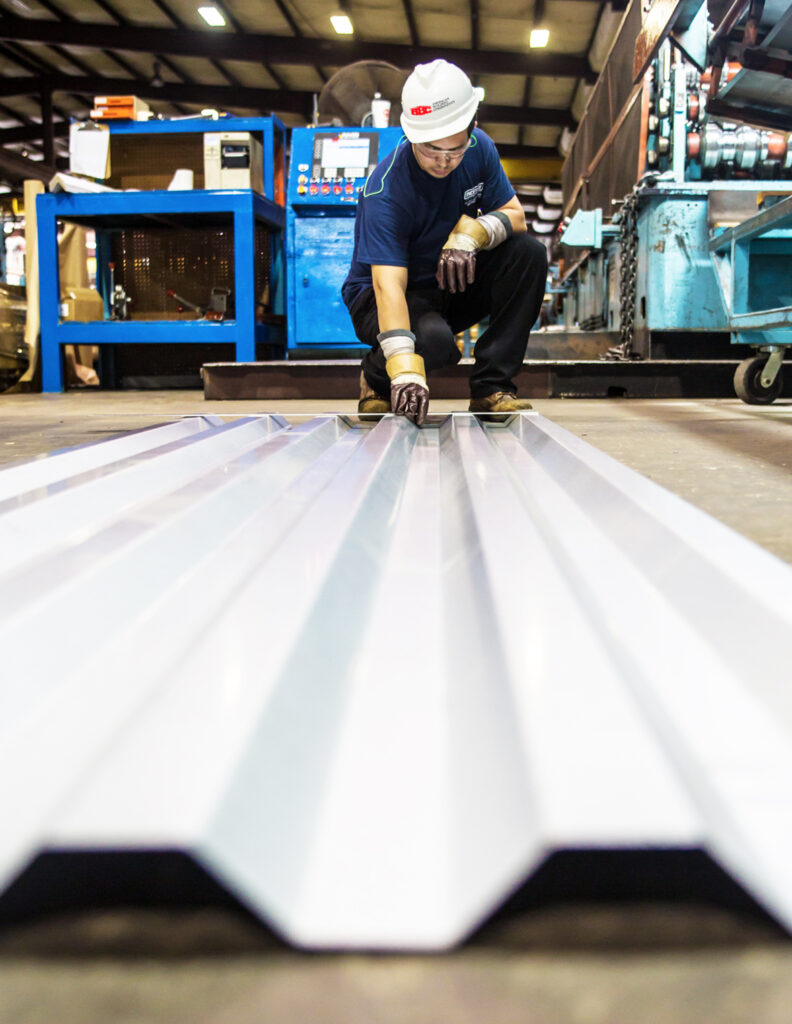In our last blog post, we outlined the steps to take before metal panel installation to ensure projects are built to last. In this post, we’ll take a look at the important metal panel installation considerations that should be made, particularly when working with varying surface conditions and building end-uses.
Surface Considerations:
During the installation of metal panels, it is critical that installers:
- make sure everything is square and on a level plane (i.e., plumb and true). If it’s not, it will need to be corrected. Note: It is not recommended that the building owner do this themselves unless they are experienced and comfortable assuming the associated risks.
- ensure the integrity of the substrate is not compromised. If installation issues or delays are caused by faulty substrate, for example, the parties responsible for the substrate would need to correct the causal issue. In retrofit projects, existing substrate issues must be addressed, but it is likely that the original builder will not be able to be sourced to correct the problem. In this case, a roofing consultant or knowledgeable substrate tradesman can help advise.
Installing Metal Panels with Different Building Applications
While installation is generally the same for most end-use applications, some equipment may vary. Depending on the other products or materials in the mix, there are certain caveats to keep in mind. For instance:
- Over Asphalt Shingles: While installing a metal roof over an existing asphalt shingle roof is possible, it is not recommended to place metal panels directly over asphalt. In this scenario, keep in mind that:
- It’s best to remove asphalt shingles or use a furring strip to create a buffer. (This means you can use a 1” x 4” piece of wood to provide clearance between the asphalt shingles and the metal panels.)
- It’s not ideal to lay underlayment on top of asphalt and then install a metal roof because the shingle will curl and those imperfections will show through the metal, particularly when using lighter gauge.
- Over Dissimilar Metals: Do not let your metal panels come into contact with dissimilar metals or allow run-off water that has been in contact with dissimilar metals to come into contact with the metal panels.
- Over Treated Lumber: Separator material can be recommended by your installer or preferred material provider (lumber yard, home improvement store, etc.) and should be used; appropriate fasteners designed to be used to connect treated lumber with metal panels should always be used in these cases as well.
Other Metal Panel Installation Considerations:
The need for the following features and considerations can vary based on projects.
- Vapor barriers
- Ice and water shields
- Regardless of all else, you’ll always want to be sure local codes/Homeowners Association (HOA) requirements are met.
Final FAQ:
How to choose a Metal Panel installer? End-users can request a list of nearby installers who may be able to help with their project from their metal building material supplier. Material manufacturers do not make these recommendations.
What if your panels are installed incorrectly? Let the installer know about any issues as soon as possible and work to get them resolved quickly. If you think the improper installation jeopardizes the product warranty, please advise the company that sold the material to you (metal panel distributor) as soon as possible. They will work with the manufacturer to resolve any warranty issues.
For more information on metal panel installation considerations or to find a metal panel distributor or installer in your area, contact your local ABC representative.





